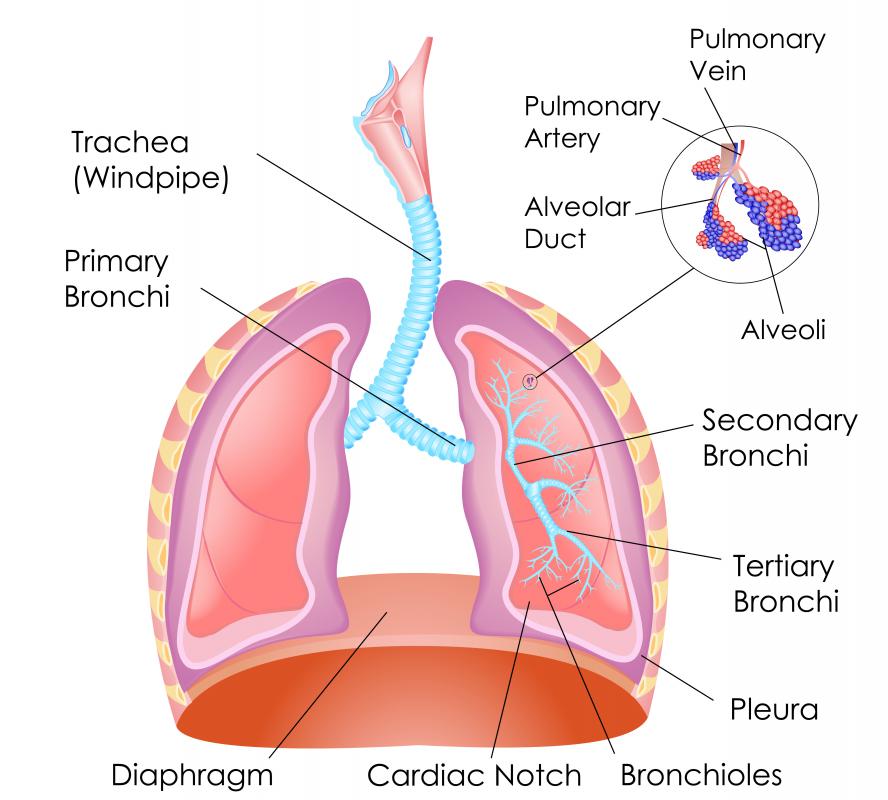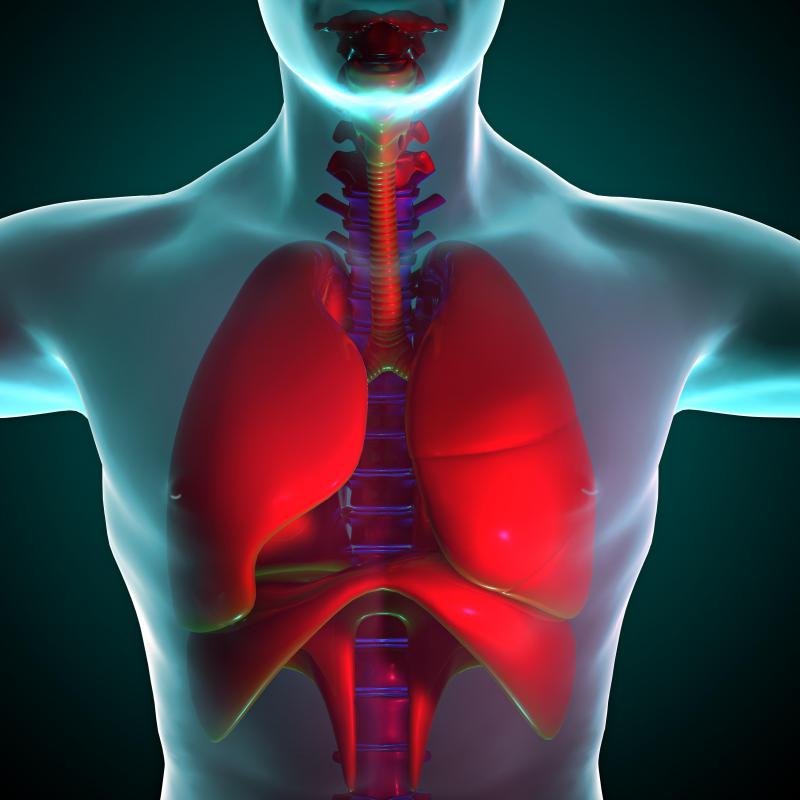At WiseGEEK, we're committed to delivering accurate, trustworthy information. Our expert-authored content is rigorously fact-checked and sourced from credible authorities. Discover how we uphold the highest standards in providing you with reliable knowledge.
What is the Anatomy of the Lungs?
The human body contains two lungs, and the anatomy of the lungs is such that they are mirror opposites of each other, with a few minor differences. Both lungs are delicate, sponge-like organs that sit in the chest cavity and are protected by the ribcage. Below the lungs sits the diaphragm; the lungs are connected to the mouth and nose by the trachea, also known as the windpipe.
The trachea supplies the lungs with air from the outside, which is carried into the lungs by branches called bronchi. These large bronchi then branch out into smaller tubes called the bronchioles, which in turn connect to each one of the millions of air sacs that make up most of the anatomy of the lungs. When the bronchi become obstructed by mucus, it is difficult for the air to get to the lungs, which can result in a wheezing cough, also known as bronchitis.

Each one of the bronchioles ends in an air sac. These air sacs are also known as the alveoli, and there are millions of these structures in each lung. Here, oxygen is transferred to the bloodstream, where it is then transported throughout the entire body. Each of the alveoli also plays a role in the reverse process; when the blood returns to the lungs from the body with carbon dioxide, the alveoli remove this product to be exhaled from the lungs. The blood comes in contact with the alveoli when it passes through a thin layer in between each of the millions of alveoli called the interstitium.

Each breath draws a number of contaminants into the body along with life-sustaining oxygen. The anatomy of the lungs includes cells designed to seek and destroy any foreign particles that make it past the protective mucous layer that lines the respiratory system. The surface of each alveolus contains cells called phagocytes, which act in a way similar to white blood cells to isolate and destroy any potentially harmful particles found.

The lungs can expand and contract with every breath. Covering the lungs as well as the inside of the chest cavity is a thin, slippery coating called the pleura. This allows the lungs to move within the chest cavity and slide easily against the other organs they are pressed against. While the organs mirror each other in the way that the anatomy of the lungs is constructed, the right lung is slightly larger than the left and contains three major lobes, while the left contains only two.
AS FEATURED ON:
AS FEATURED ON:















Discuss this Article
Post your comments